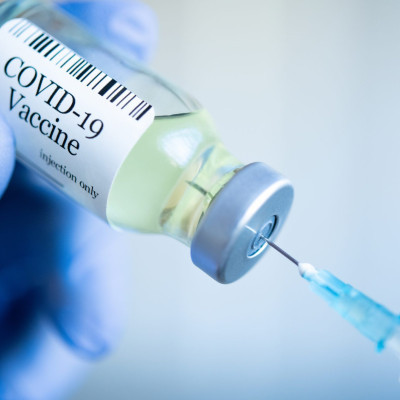
2022-05-29
Visited : 1840
A nanoparticle vaccine that combines two proteins that induce immune responses against severe acute respiratory syndrome coronavirus 2 (SARS-CoV-2), the virus that has caused the global pandemic, has the potential to be developed into broader and safe SARS-CoV-2 vaccines, according to researchers in the Institute for Biomedical Sciences at Georgia State University.
The SARS-CoV-2 pandemic has caused more than six million deaths since 2019 and is a public health burden worldwide. The virus is rapidly evolving, characterized by the emergence of several significant variants.
To combat the virus, the spike protein (S) is the preferred target antigen for vaccine development based on its essential function and abundant neutralizing epitopes. However, current vaccines are limited in protecting against different variants.
This study, conducted in mice, investigates the immune responses induced by two proteins, the spike protein and its relatively conserved stem subunit (S2) of the spike protein. The results, published in the journal Small, found that the assembly of the two proteins into double-layered protein nanoparticles improves the immunogenicity of the proteins.
“The entire S protein has been used as the major antigen in vaccines against this ongoing pandemic,” said Dr. Baozhong Wang, senior author of the study and Distinguished University Professor in the Institute for Biomedical Sciences at GeorgiaState University. “However, as the number of infections continues to rise, more and more variants have appeared and supplanted the ancestral virus. For this reason, the efficacy and protection of current vaccines are under constant threat and need continuous improvement.
“In contrast, the stem is more conserved and has fewer mutations across lineages. In addition, the stem could induce effective antibody neutralization and vigorous antibody-dependent cellular cytotoxicity (ADCC) activity against multiple variants of S protein. This work shows that the stabilized stem subunit could be a potential antigen for a SARS-CoV-2 universal vaccine against unpredictable variants.”
The study found immunization with the stem induced balanced Immunoglobulin G (IgG) antibodies with potent and broad ADCC activity, a type of immune reaction in which infected cells are coated with antibodies that then recruit certain types of white blood cells to kill the infected cells. In addition, the double-layered protein nanoparticles constructed from the stem and the full-length spike protein induced more robust ADCC and neutralizing antibodies than the stem and spike protein, respectively.
The researchers also discovered nanoparticles produce more potent and balanced serum IgG antibodies than the corresponding soluble protein mixture, and the immune responses are sustained for at least four months after the immunization. With a more balanced IgG isotype antibody induced by the stem, long-lasting immune responses, and excellent safety profiles, the double-layered protein nanoparticles have the potential to be developed into broader SARS-CoV-2 vaccines, the study reports.
“The stabilized, conserved S2 stem subunit demonstrated its potential as a universal SARS-CoV-2 vaccine candidate against unpredictable variants,” said Dr. Yao Ma, first author of the study and a postdoctoral research fellow in the Institute for Biomedical Sciences at GeorgiaState University. “Our double-layered protein nanoparticles incorporating the full-length spike protein and the S2 stem induced robust and long-term immune responses and exhibited a safety profile in our primary studies, providing an option for current SARS-CoV-2 vaccine development.”
“The pandemic is far from over, and new variants continue to emerge and pose a massive threat to human health. Therefore, the updating of vaccines needs to keep pace with the times to avoid another pandemic with an unpredictable new variant.”
Read the original article on GeorgiaState University.